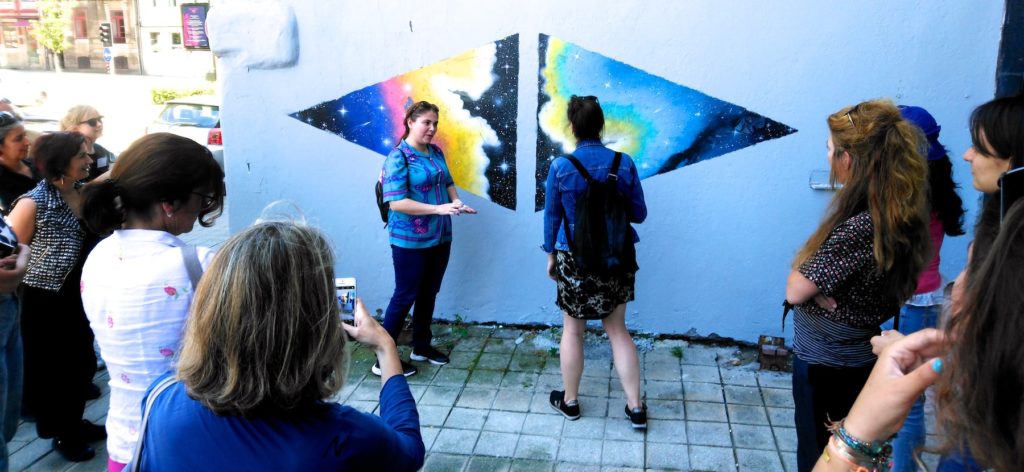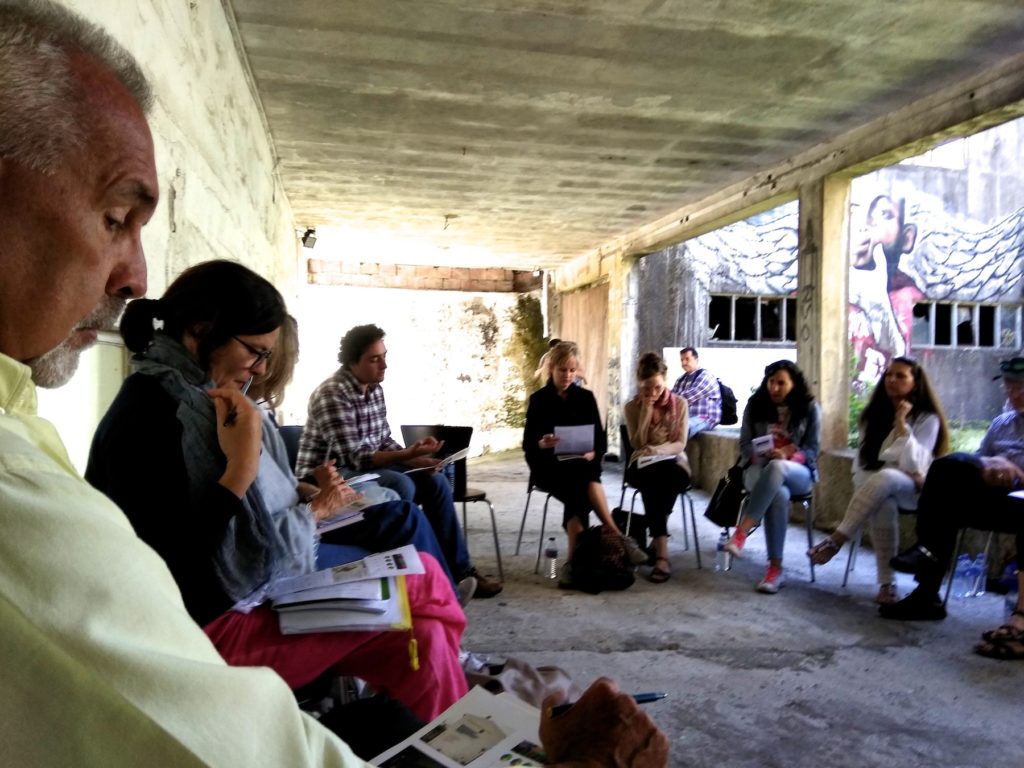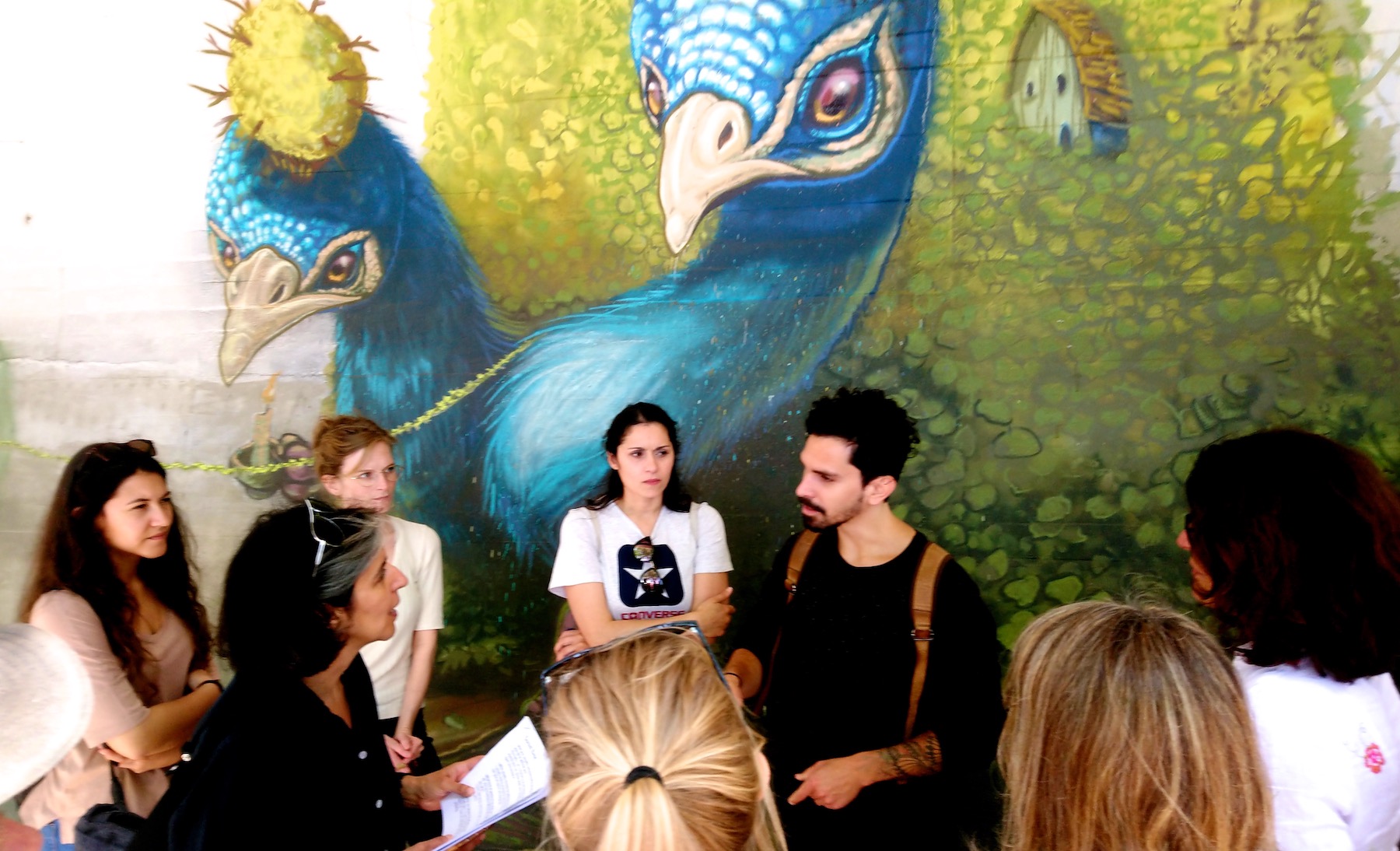This week’s returning author, Barcelona-based Will Shank, was trained at the Institute of Fine Arts of NYU and at the Harvard University Art Museums. He was head of conservation at SFMOMA (the San Francisco Museum of Modern Art) for a decade, and has since 2000 worked independently in collections care, with a specialization in the conservation of large outdoor murals. He is co-founder of the American initiative Rescue Public Murals.
Each year, an increasingly knowledgeable and varied group of international conservation professionals watches eagerly as Marta Palmeira and her colleagues decide what kind of annual master class to present. The brief training programs offered by 20|21 Conservação e Restauro focus, as their name would indicate, on issues of preserving modern and contemporary works of art of this century and the last. The wide repertoire of topics featured in the past decade has included recent developments in the cleaning, varnishing, and retouching of paintings, as well as special sessions addressing the care of works on paper and outdoor sculptures. The master classes have been taught by an impressive group of international experts in their respective conservation fields.
I was flattered to be invited to lead the 15th master class in this series, focusing on the conservation of paintings on outdoor walls. I had the perfect collaborator in mind; one quick email to my Greek colleague Maria Chatzidakis, of the Department of Conservation of Antiquities and Works of Art, University of West Attica, resulted in an enthusiastic “yes!”. I had collaborated previously with Maria, co-founder of St.a.co (Street Art Conservators), an organization in Athens whose dozen or so members are formally trained in the conservation of antiquities and art, and with a ‘conservation toolkit’ of toothbrushes and sponges painstakingly clean up vandalized murals so the public can enjoy them again. The group works pro bono in the streets of some of Athens’ most richly ornamented neighborhoods in order to assess the condition of the Greek capital’s most important murals from the past several decades. [See their website at https://www.facebook.com/staco.street.art.conservators/] Once Maria agreed to co-present on this topic in Porto, we began the planning stage with Marta.

Portuguese artist Mariana PTKS discusses her paste-up with the visiting group of conservators. Photo by Will Shank.
Less than a year earlier, I had had the pleasurable experience of linking with some of Chicago’s finest muralists, representing several generations of mural artists, as I worked with the Chicago Public Art Group to plan a two-day tour and workshop around the Windy City. This resulted in a series of posts on the VoCA Blog, which can be seen here. The idea for the Porto class was loosely based on the Chicago experience, but it would include an inter-active element of actually performing some on-site treatments, thanks to Maria.
As we solicited participants and began to organize the master class, the most important planning element was attracting a group of local artists to engage in dialog with the visiting conservators. This activity proved to be perhaps the greatest challenge for 20|21 because artists in Porto are not used to talking about their street artwork. While previous master classes were conducted by experts—from René de la Rie, with Whitten/Proctor, on painting varnishes, to Thea van Osten on plastics degradation, to Roberto Bestetti on retouching colors—most of the sessions had been based in the studio or laboratory, where ours would take us to the streets of Porto. Some artists approached by Marta were too busy or otherwise not available to participate. Others had no idea why people who restore art would be interested in their newly painted works. But happily, a core group of important Portuguese artists were intrigued by the concept, and Marta convinced them to sign on.
All of this touring and talking with artists was complemented by an afternoon session, led by Pedro Soares Neves of the Fine Arts University of Lisbon, on the history and evolution of street art in Portugal. The round-table discussion was held, appropriately, in a ruined concrete structure, the Fundação José Rodrigues, whose walls are filled with “pieces” (masterpieces) of street art from a 2010 festival that was held there.

Class conducted in an appropriate indoor-outdoor setting, led by Pedro Soares Neves (silhouetted, at center). Photo by Maria Chatzidakis.
The participants turned out to be an extremely engaged group of colleagues from places as far-flung as Australia, Romania, and Northern Ireland, with the majority of them based in Mediterranean countries. In spite of being jam-packed with information and activities, the two days flew by. Lectures were complemented by hands-on experimentation with the tools of street art conservation, and participants were encouraged to bring their own experiences, focusing on their own challenges in dealing with the preservation of outdoor painted walls in their own countries. For all of us, I dare say, the most engaging aspect of the two-day event was the dialog with the artists who stood in front of their creations and fielded questions from the visiting conservators…questions about longevity that many of them had never considered before.

Artist Mariana PTKS stood back and watched as a flaking paste-up was consolidated and gently pressed back into place under the careful fingers of a group of conservators. Miguel Januário explained that the group that created the now-iconic QUEM ES PORTO purposefully chose ceramic tile as a medium not only because it represents a traditional Portuguese craft but also because of its durability. Heitor Correa patiently fielded questions about the choice of location of his mural in a difficult-to-paint (and to maintain) underpass of a Porto freeway and his expectations for its future. Feedback from the participants suggested that the conservators learned as much from these exchanges as did the muralists.
Hats off to Marta Palmeira and to the innovative staff of 20|21 Conservação e Restauro for their valuable contribution to continuing education of conservators.

